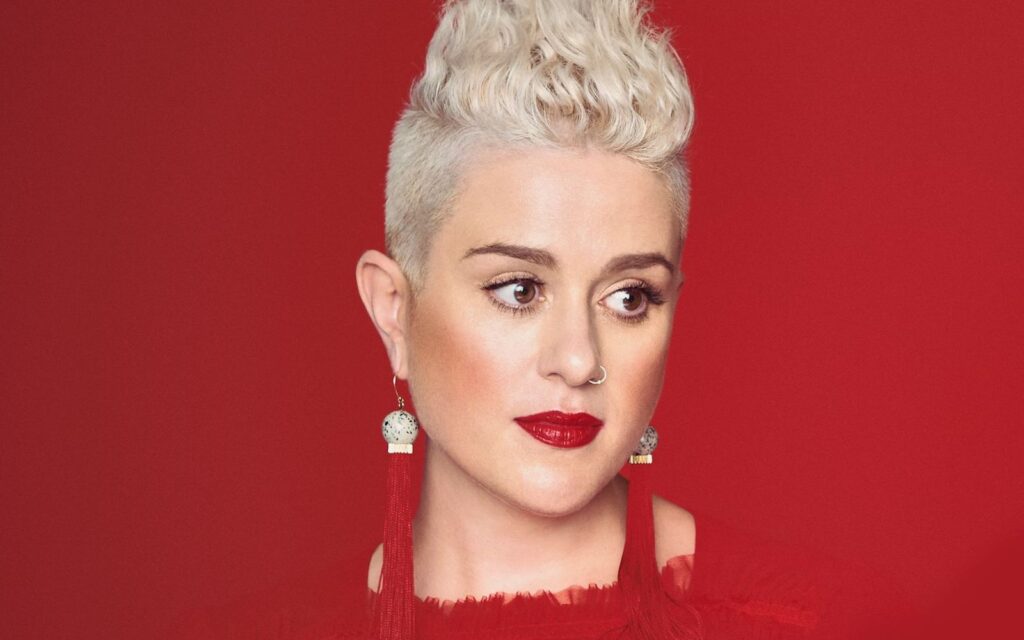Here are two more nominees for the unofficial title of Melbourne's most underrated artists.
One is a singer-guitarist, who remains relatively unknown to the wider general public despite earning enviable respect and admiration amongst her peers and admirers throughout her long and successful career.
The second were exceptional exponents of white funk/soul who released several successful singles and albums and achieved a considerable live following.
Margret Roadknight
Melbourne-born blues, folk and jazz singer Margret Roadknight began her long and diverse career in 1963 at the age of twenty, singing in Melbourne’s folk and blues clubs. Although not formally trained, Margret was singing from an early age at home, at school, and in choirs, and was at first inspired by performers like Nina Simone and Harry Belafonte. Tall, and with a commanding stage presence to match, Margret became a favorite at blues, jazz and folk festivals, including Sunbury, at which, she has wryly observed, she was the only female performer in 1973.
A renowned performer of other people’s material, Margret has traversed the musical landscape from jazz to folk, blues, cabaret and gospel, and has even performed for children in the musical act Cinderella Acapella. Musical historian Ian McFarlane likens ‘’her soaring voice…to the great blues singers of the past like Bessie Smith’’.
Roadknight has never aspired to write songs herself. Speaking to musician and writer Dave Graney on Melbourne’s Triple R in October 2023, she said she was “happy to roam around and pick the eyes out of other people’s output.’’ She has done a splendid job of doing just that. She played her first professional gig at the Emerald Hill Theatre in May 1963, and was soon juggling a residency at folk venue The Reata (replacing Bruce Woodley) with a full-time job at the PMG. By 1965 she had moved to Sydney and was singing full-time, and had made her first TV appearances with host Leonard Teal on Folkmoot, and on Dave’s Place, hosted by Dave Guard of the Kingston Trio. Then it was back to Melbourne where she became a regular at Frank Traynor’s Jazz Club, before replacing Judith Durham as vocalist for jazz/blues band Frank Traynor’s Jazz Preachers when Durham left to join The Seekers.
Roadknight’s debut album was the live set People Get Ready (November 1973), recorded at Frank Traynor’s Folk Club and released on the Move label. Covers of songs by Joni Mitchell, Curtis Mayfield, Malvina Reynolds and Duke Ellington featured. In 1974, she shared an album with renowned bluesman Dutch Tilders titled Australian Jazz of the 70s Vol. 5 The Blues Singers. Later that year, Margret spent six months in the USA studying contemporary music courtesy of an Australian Council of the Arts grant.
Roadknight’s most successful single, and the song for which she is generally best remembered, was a cover of Newcastle singer-songwriter Bob Hudson’s moving ballad Girls In Our Town, which reached #21 in Melbourne in 1976. The song, which describes the bleak prospects awaiting teenaged girls in Australian country towns, was featured on her third album Margret Roadknight, released in October 1976. The album also produced a second single, Love Tastes Like Strawberries.
Roadknight has toured extensively across Australia, the USA, China, the Philippines, the UK and Europe. She has been to the USA a total of 11 times, including in 1988 when she represented Australia at the Houston (Texas) International Festival. She has performed and toured with a wide selection of top Australian and international talent, including Jeannie Lewis, Phil Manning, Judy Jacques, Bob Hudson, Graham Lowndes, and the acclaimed American slide guitarist and singer-songwriter Ellen McIlwaine, with whom she toured as support act in 1980.
Among her twelve album releases are three compilations: Living In the Land of Oz, released in 1984; Decade, released in 2013; and her most recent album, Long Time (Recorded 1988-2023), launched on 29 November 2023. Long Time covers the latter half of her musical career from 1988 to 2023, and is to be her last album. It includes an excellent newly-recorded guitar version of Girls In Our Town, and a rousing gospel version of Graham Lowndes’ Till Time Brings Change, in which she is joined on backing vocals by Jeannie Lewis, who had herself made the song one of her hallmark recordings.
In 2018, Margret won an Australian Women in Music Awards ‘’Lifetime Achievement Award’’ for her significant and lasting achievements in her chosen field.
Margret Roadknight now lives by herself in inner Melbourne. While she has now effectively retired from the music industry, she performed recently at Sunbury 2024 alongside the likes of Madder Lake, Spectrum, Richard Clapton and Ross Wilson, in a 50th Anniversary commemoration of the iconic pop festival of the 70s. After more than 60 years in the music business, Margret is taking a well-earned rest!
Stylus
Stylus was formed in Melbourne in 1975 from the remnants of local band Mason’s Cure, whose founder Ian Mason (ex-Kush) had left to join The Bootleg Band. The remaining members added keyboardist Sam McNally, changed their name to Stylus, and soon became Australia’s leading exponents of the then less-than-fashionable but groovily danceable white funk/soul sound.
Stylus comprised Peter Cupples on lead vocals, guitar, electric piano and percussion; Ronnie Peers on lead guitar; Ashley Henderson on bass and vocals; Peter Lee on drums and percussion; and Sam McNally on keyboards. The band quickly found its feet, touring with Ike and Tina Turner, Focus and Sherbet and securing a record deal with WEA under their Atlantic label. Their first single, a cover of the Seals and Crofts groover Summer Breeze, was released in July 1975 and reached #31 in Melbourne and #58 nationally (Kent Music Report). Their second single World of Make Believe was released in October and fared even better, reaching a peak at #27.
Stylus’ debut album Where in the World was released in November 1975 and peaked at #25 nationally (#19 in Melbourne). A third single from the album, I’m Going Home, was released in April 1976, but with the band having left the label, it was not successful.
Undeterred, Stylus re-emerged on the Crystal Clear label with the single So Much Love, which peaked at #44 nationally (#30 in Melbourne) in August 1976. They then signed with the EMI-aligned Oz label owned by Glenn Wheatley and Ross Wilson, and released their second album For the Love of Music in October 1976 (#70 nationally). The album produced two singles, I Just Don’t Wanna Fall in Love Right Now, which peaked at #83, and Kissin’, which failed to chart.
Their third album The Best Kept Secret (with new drummer Trevor Courtney) was released in April 1978, peaked at #70 and produced three singles, Workout Fine (#64 nationally), Look at Me, and Got to Say Goodbye. Stylus then became the only Australian band to be released in the USA by prominent Detroit label Motown Records, where the album was distributed under the name Stylus by Motown’s Prodigal imprint.
With new drummer Joe Tattersalls replacing Courtney, the band toured Australia with jazz guitarist George Benson, before releasing their fourth album, Part of It All in August 1979. When the album peaked at a disappointing #91 nationally and the single If You Believe in Me failed to make an impact, Stylus called it a day.
While Peter Cupples and Sam McNally went on to successfully pursue their musical careers, in 1988-89 Toshiba-EMI in Japan re-issued the Stylus back-catalogue. The band, comprising Cupples, McNally, Henderson, Peers and drummer David Jones, reformed in 2001, and in 2003 released a live album, Still Alive. In 2009, at the request of Toshiba-EMI, Stylus recorded a new studio album, Across Time, with Gerry Pantazis on drums, which was released in Japan in June 2010.
Although they have long since given up touring, Stylus still occasionally perform live nearly fifty years after forming.
Read part one and part two of the series, before discovering some of Melbourne’s best current underground bands here.







